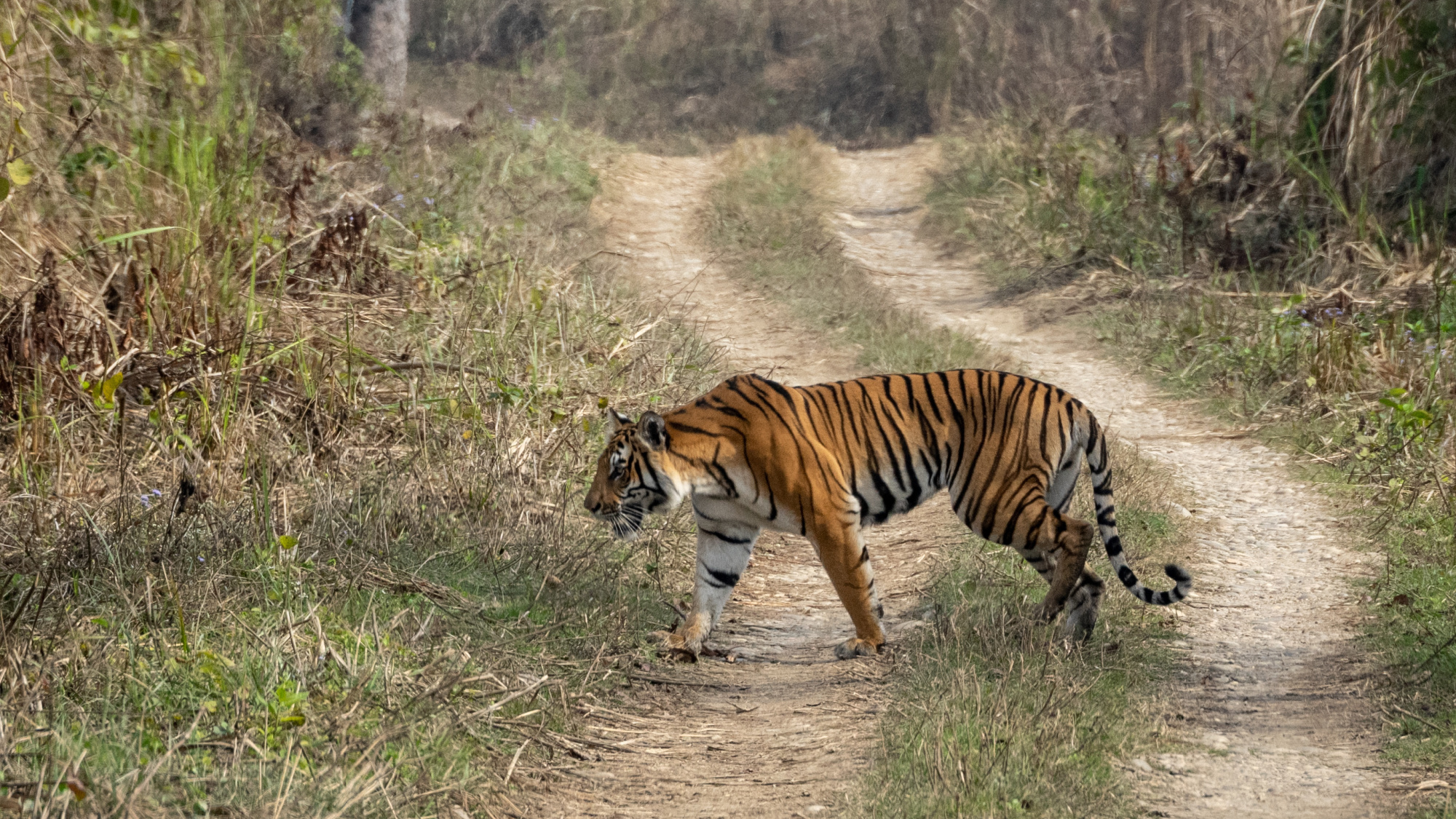Tempers are flaring in Nepal after Minister of Forests and Environment Birendra Mahato suggested allowing limited tiger hunts to manage the country’s fast-growing tiger population. During a podcast interview in June, Mahato floated the idea of selling these hunts to bidders from other countries. The price tag on such an opportunity? Around $25 million per cat, Mahato suggested.
Now, conservationists, biologists, Indigenous communities, and animal advocates are shredding the Minister’s idea, which was also born from a desire to fill the government’s coffers and fund conservation work.
During the interview, Mahato mentioned that he’d heard from several American and Japanese hunters who’d offered millions of dollars to hunt a Nepali tiger. He suggested a month-long hunting season every four or five years and didn’t mention bag limits or quotas (as far as we can tell, since the interview was in Nepali), but according to Mongabay’s reporting, it sounds like the opportunity for hunters to kill multiple tigers over the course of the hunt was on the table.
Critics point out that killing the apex predators can have a cascade of unintended consequences, some of which might actually endanger livestock and humans (as well as the globally endangered tigers themselves) even more. Tigers are also considered sacred to Indigenous peoples in the region, some of whom relocated their lives and communities to create more space for Nepal’s ambitious tiger conservation goals.
Too Many Tigers?
Nepal finds itself in the unique position of having what some consider too many tigers. In 2010, the 13 nations around the world with resident tiger populations committed to doubling their populations by 2022. Not only was Nepal the only country to actually make good on its promise, but it went above and beyond. The country’s tiger population tripled, going from 121 to 355 in just 12 years, Mongabay reports.
This was a huge success for global tiger conservation efforts. The worldwide population of Panthera tigris is estimated to be around 3,100 animals, which means Nepal is now home to roughly 11 to 12 percent of all the tigers on the planet. But if you ask hunters and hikers in the Upper Peninsula of Michigan or the Greater Yellowstone Ecosystem, more predators on a landscape often means more human conflict. And that’s exactly what’s been happening in Nepal.
Last year, in just one small area of Chitwan National Park in the south-central part of the country, tigers killed 12 people in 11 months. Meanwhile, in western Nepal, the tigers in and around Bardiya National Park don’t have any large wild prey to hunt, so they’ve been targeting livestock and humans instead. The estimated 125 tigers that call the park home have killed over two dozen people in the last five years. The rural and Indigenous communities that made space for the tigers in the first place fall victim the most.
With these numbers in mind, some wonder if Nepali tigers have reached their biological carrying capacity and if some level of predator management is warranted.
“Indigenous people and the communities living close to tiger habitats are paying the price of conservation [success] with their lives,” Tharu Cultural Museum and Research Center director Birendra Mahato (not to be confused with the Minister of Forests and Environment with the same name) told Mongabay. “Government studies on carrying capacity don’t take this into account … Personally, looking at the social and environmental situation in Chitwan, I believe that we already hit carrying capacity back in 2018.”
To Hunt or Not To Hunt?
This might sound familiar to rural residents in the Upper Midwest and Mountain West. If grizzlies or wolves killed that many humans in the U.S., the national conversation would probably redirect from experimental populations and reintroductions to lethal control and season-setting. But if you ask wildlife biologists, the feasibility of killing a specific number of predators to manage their population remains questionable, especially when it comes to tigers.
One study found that when dominant males die, competing males will likely kill all their offspring. Likewise, when females die, cubs struggle and infant mortality skyrockets. In other words, one dead tiger doesn’t always equate to just one dead tiger, and every mortality counts against an endangered global population.
The rising number of human deaths seems to be of more immediate concern to Minister Mahato, but whether the hunt will become a reality remains to be seen. A host of other issues that compound Nepal’s tiger problems require a hard look before any hunting should be considered, former chief warden of Chitwan National Park Maheshwor Dhakal told Mongabay.
Read Next: Hunting the Nile Crocodile, the Very Picture of Death
“The first thing that needs to be addressed is the quality of habitat,” Dhakal said. “Then, we need to urgently address the issues of human-wildlife conflict, poaching and illegal trade, threat of invasive alien plant species, climate-induced disaster, management of prey base, development of infrastructure, employment of local people in tourism, and mobilization of security forces.”
The people most impacted by these decisions have largely been left out of the tiger management conversation, according to Shristi Singh Shrestha of the Jane Goodall Institute Nepal.
“Officials who blindly advocated to increase the population of tigers without considering its impacts on local communities need to be held accountable for their actions,” Shrestha told Mongabay. “How can a group of leaders meeting in a big country decide how many tigers people in Chitwan or Bardiya will have to live with?”

